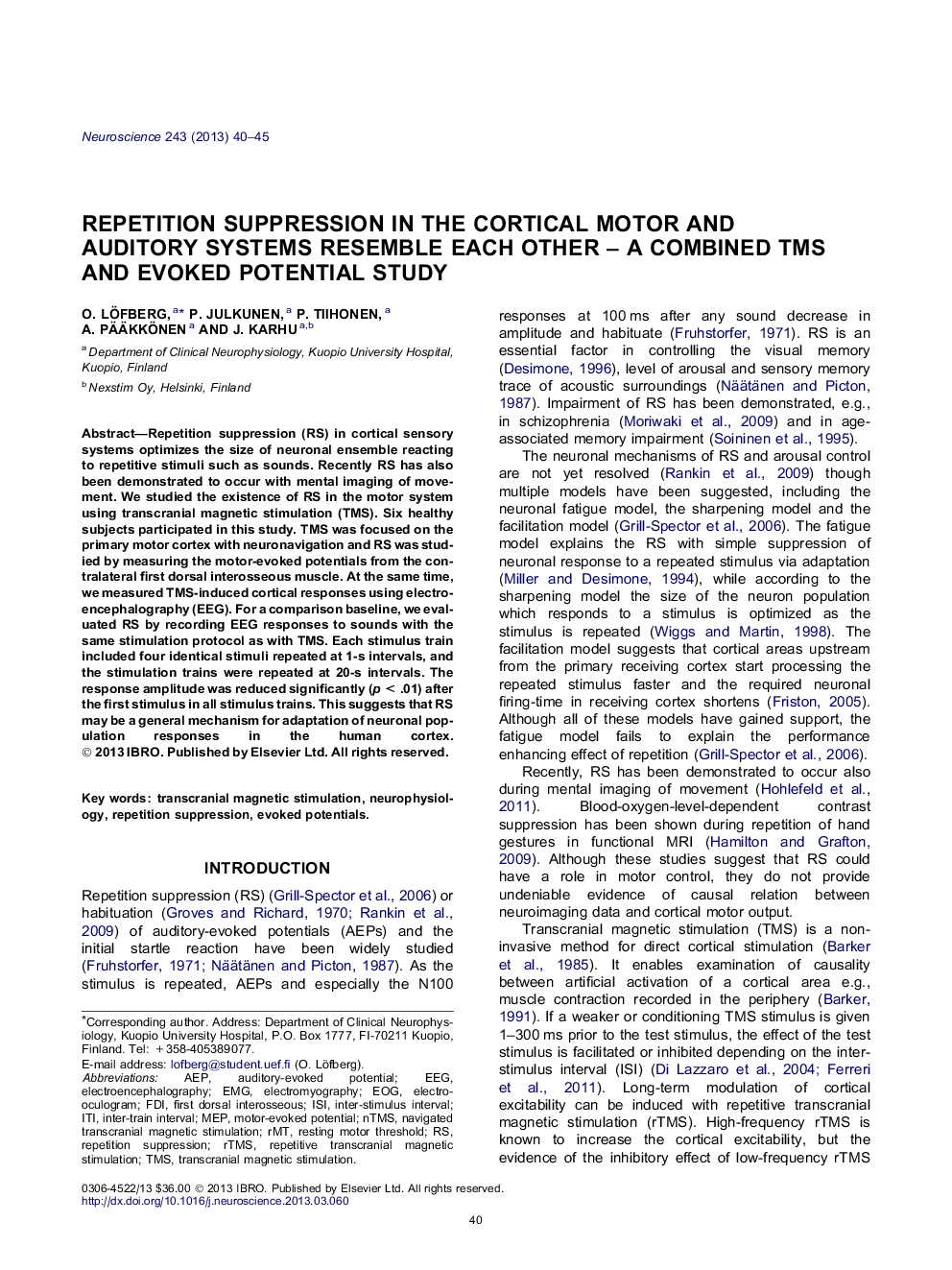| Article ID | Journal | Published Year | Pages | File Type |
|---|---|---|---|---|
| 4337993 | Neuroscience | 2013 | 6 Pages |
•We examine cortical repetition suppression with TMS combined EEG.•The amplitude of the stimuli responses decreases after the first stimuli.•Recorded repetition suppression is similar in cortical auditory and motor systems.•We hypothesize that repetition suppression is a generalized cortical mechanism.
Repetition suppression (RS) in cortical sensory systems optimizes the size of neuronal ensemble reacting to repetitive stimuli such as sounds. Recently RS has also been demonstrated to occur with mental imaging of movement. We studied the existence of RS in the motor system using transcranial magnetic stimulation (TMS). Six healthy subjects participated in this study. TMS was focused on the primary motor cortex with neuronavigation and RS was studied by measuring the motor-evoked potentials from the contralateral first dorsal interosseous muscle. At the same time, we measured TMS-induced cortical responses using electroencephalography (EEG). For a comparison baseline, we evaluated RS by recording EEG responses to sounds with the same stimulation protocol as with TMS. Each stimulus train included four identical stimuli repeated at 1-s intervals, and the stimulation trains were repeated at 20-s intervals. The response amplitude was reduced significantly (p < .01) after the first stimulus in all stimulus trains. This suggests that RS may be a general mechanism for adaptation of neuronal population responses in the human cortex.
